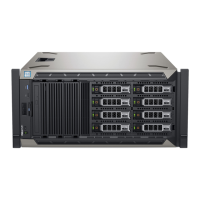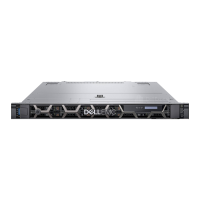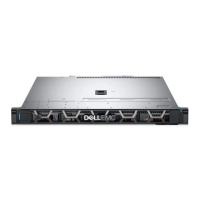device with a device containing less storage capacity, you can configure the device to
a smaller capacity than its actual capacity, in preparation for replacement. This will
reduce rebuilding and rebalancing operations in the system later on. For more
information, see “Setting device capacity limits”.
The system has job queues for operations that take a long time to execute. You can
view the jobs in the Backend Planned Rebuilds and Planned Rebalancing table
views.
There are two ways of removing devices from a system:
l
From the Hardware view—for details, see “Using the Hardware view to remove
and replace a device”
l
From the Backend view—for details, see “Using the Backend view Remove
command”. This procedure can only be used to remove a device providing storage.
It cannot be used for a device providing caching.
Using the Hardware view to remove and replace a device
This topic explains how to remove a device using the Remove command in the
Hardware view.
NOTICE
The Remove command deletes the specified objects from the system. Use the
Remove command with caution.
In general, if you want to remove and replace a device, follow these steps:
1. Gather information about the faulty device and the SDS.
2. Remove the faulty device from the VxFlex OS system.
3. Remove the faulty, physical device from the server.
4. Add the replacement device to the server.
5. Add the replacement device to the VxFlex OS system.
6. Ensure that there are no errors.
Identifying a faulty device
About this task
The steps to perform are different, depending on whether the device is providing
caching (as in the case of some SSD disks), or whether it is used for storage (all HDD
disks and some SSD or NVMe SSD disks). Our first step is to locate the faulty device
in the VxFlex OS GUI, and then to determine its use.
Procedure
1. Identify the faulty disk:
a. Log in the VxFlex OS GUI, and from the Monitor > Alerts view, find the
node that has a faulty disk alert message.
b. From that node's Hardware view, write down the following:
l
Node information
l
Disk WWN
l
Disk slot number
c. From the Hardware view, locate the node and the faulty disk.
The faulty disk is colored orange.
Configuring the System using the VxFlex OS GUI
Dell EMC VxFlex Ready Node AMS User Guide 193

